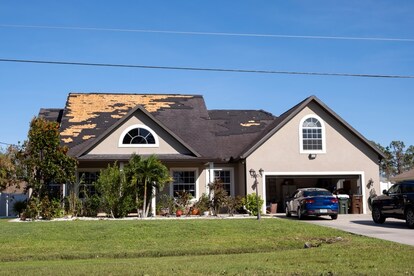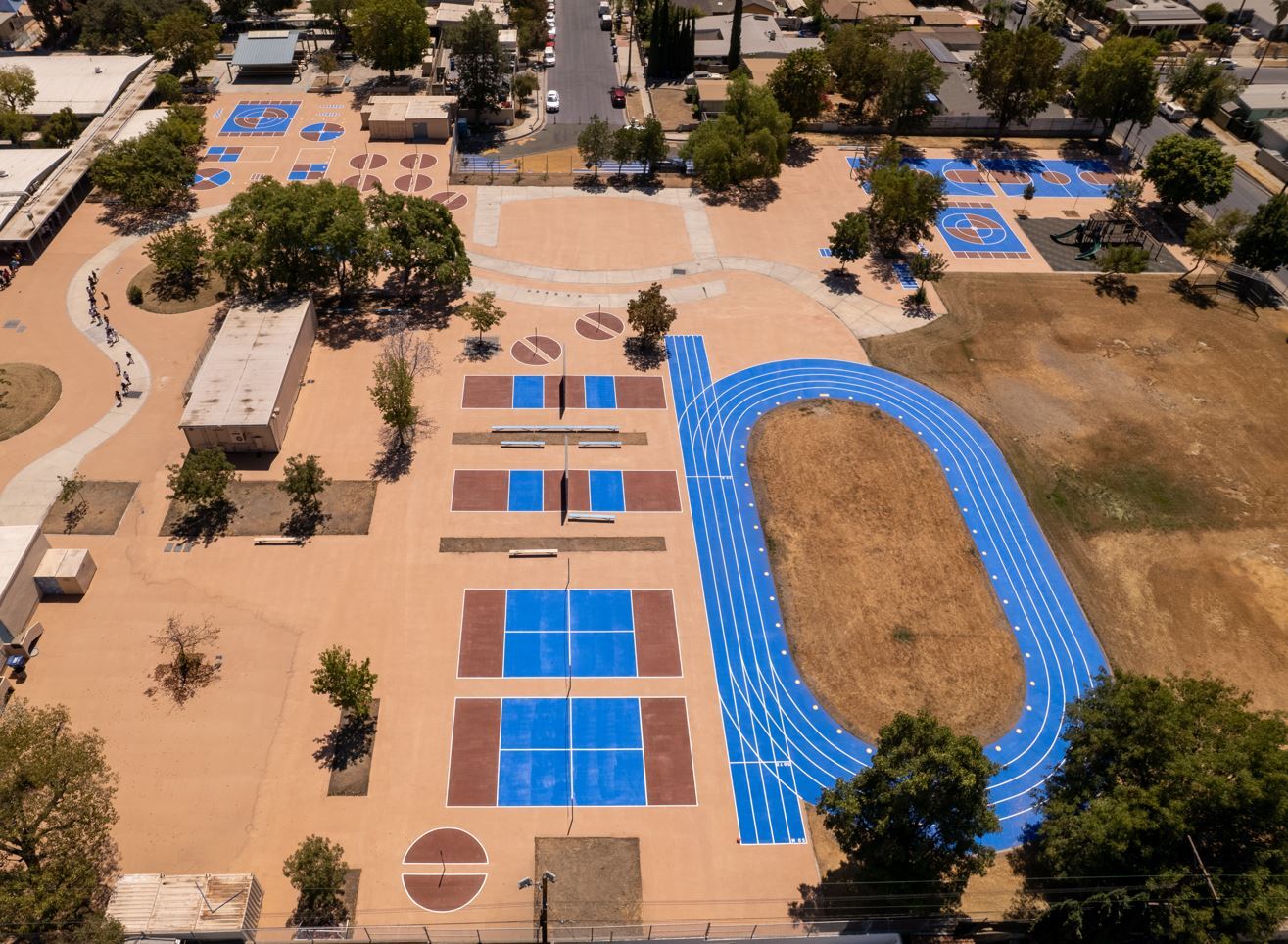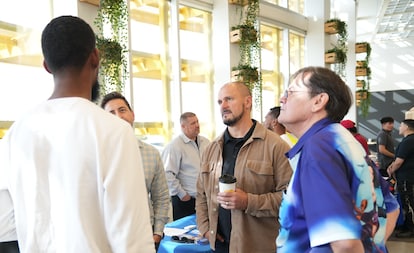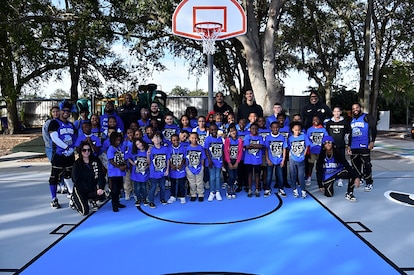
Your Home
Hurricane Roofing: How to Prepare Your Roof for Hurricanes
While you can't control the weather, you can minimize its impact on your home. If you live in a hurricane-prone area, you can take steps before and after a storm to protect your property from damage. For instance, choosing quality hurricane roofing materials and completing proper roof maintenance can help reduce roof damage.Here's everything you need to know to prepare your roof for hurricane season.Types of Hurricane Roofing MaterialsThe Saffir-Simpson Hurricane Wind Scale classifies hurricane categories based on their highest approximate wind speeds:Category 1: 74 to 95 mph windsCategory 2: 96 to 110 mph windsCategory 3: 111 to 129 mph windsCategory 4: 130 to 156 mph windsCategory 5: 157 mph or higher windsWith this in mind, specific roofing materials are designed to resist high winds and protect against damage from debris.Impact-Resistant ShinglesImpact-resistant shingles meet the UL 2218 impact test standards, defending your roof—and home—against the natural elements. They can cost more than typical asphalt shingles but can be worth the expense if you live in a hurricane-prone region.Metal RoofingMetal roofing can resist heavy impacts and withstand high winds, making it one of the best roofing systems for hurricanes. Some metal roofs can withstand wind speeds up to 150 mph, covering you even during Category 4 hurricanes.Synthetic RoofingSynthetic roofing materials resist wind, water, and fire damage, making them beneficial during hurricanes. Since they use man-made materials, they don't rely on a natural build. Instead, they're built with damage-resistant features in mind while mimicking the appearance of natural materials. These composite roofing shingles are typically made from recycled plastic, asphalt, and other products.GAF Hurricane Roofing SolutionsYour choice of roofing materials can limit roof damage. Some products are manufactured specially to withstand the harshest weather conditions and keep everyone in your home safe. Here are a few GAF products developed with harsh weather in mind.GAF Timberline® AS II ShinglesTimberline® AS II Shingles are created with proprietary SBS-modified asphalt that's flexible to bolster impact resistance. Impact resistant shingles can be stronger than other non-impact resistant asphalt shingles, and since they pass the UL 2218 impact-resistance test, you could potentially qualify for insurance discounts. Timberline® AS II shingles come with a 25-year StainGuard Plus™ Algae Protection Limited Warranty that protects against algae discoloration. Plus, when installed with four qualifying GAF accessories, they're eligible for the WindProven™ Limited Wind Warranty, which provides infinite wind speed protection.GAF Grand Sequoia® AS ShinglesGrand Sequoia® AS Shingles also pass the UL 2218 Class 4 test, as they're built with the same SBS-modified asphalt formula. The DuraGrip™ Adhesive seals shingles tightly to prevent wind blow-off, and the shingles are warrantied against winds up to 130 mph, covering Category 4 hurricane winds.GAF TimberSteelTM Premium Metal Roofing SystemThe GAF TimberSteel™ Premium Metal Roofing System gives your home the hurricane-resistant capabilities of metal roofing at an affordable price. The system can help keep your home safe against high winds and rain through its multiple layers of protection. It's designed to provide a beautiful look with GALVALUME® steel that features top and bottom interlocking to keep everything tight and leakproof.Hurricane-Resistant Roof DesignsMore goes into building a hurricane-resistant roof than just the material. The roof shape and slope can provide additional resistance.Hip roofs can best resist hurricane weather. Although they're typically costlier to build than gable roofs, a hip roof's four slopes provide better wind uplift resistance than a gable roof's two slopes. As the wind flows around the roof causing pressure differences, the additional slopes are better equipped to handle the wind flow.A 30-degree roof slope also provides the best protection against high winds, preventing wind from easily lifting the roof.Installation Quality Plays an Important RoleRoofing contractors must follow proper techniques when preparing or installing a roof for hurricane season. This often means using nails instead of staples to install shingles since nails better attach the shingle to the roof and create fewer holes for water to get in. Likewise, properly installed flashing—without gaps in the intersection—helps keep heavy rainfall from entering the home.Additionally, a contractor can install hurricane clips to ready a roof for harsh weather. These steel plates secure and connect roof trusses to the home's wall structure, keeping the roof attached during high winds. In states like Florida, new homes are required to have hurricane clips installed.Preparing Your Roof for Hurricane SeasonThe Atlantic hurricane season starts June 1 and lasts until November 30, reaching its peak in September.Months before hurricane season approaches, schedule a professional roof inspection from a trusted contractor to ensure your roof is up-to-date and isn't damaged. This gives you sufficient time to complete any maintenance and repairs before the season arrives, as contractors might be busy once it starts.Reinforce Weakened AreasA weak spot in your roofing system can lead to further damage and compromise the rest of the roof's integrity. Even a small opening in a shingle can cause serious water damage during a rainstorm. Your roofing contractor can fix or replace loose or torn shingles, repair broken flashing or fascia, clean debris from your roof, and clear out your gutters.Mitigate Potential Tree DamageSharp winds and storms can sometimes cause tree branches to break and fall on top of the roof, damaging shingles or other materials. So, trim nearby trees as part of your roof maintenance. Also, remove fallen leaves before and after storms. Leaves can clog gutters, preventing water from flowing off the roof during heavy rain.Schedule Post-Storm InspectionsRoofing maintenance after a storm is just as important as before a storm. If a hurricane damages your roof, find a company that handles storm damage roof repair. While you can try assessing any roof damage from the ground, a roofing contractor can accurately identify the damage extent and fix it. They can also help you with any insurance claims if your policy covers you for these circumstances.Protecting Your Roof from Hurricane DamageYou can take several proactive measures to minimize the impact of harsh weather on your roof. Choosing the right materials—and ensuring they're installed correctly—is paramount. Hire a GAF-certified roofing contractor*and enjoy peace of mind as the next storm approaches.FAQCan a roof be hurricane-proof?Due to the nature of hurricanes, no roof is 100% hurricane-proof. But wind- and moisture-resistant roofs perform the best during hurricanes. This is why it's important to choose quality products that will protect your home in the worst possible weather conditions.What is the best roof for a hurricane?The best roof for a hurricane is made with impact-resistant shingles or metal. These materials can handle impacts from heavy objects that may blow onto your roof during a hurricane. Metal roofing can generally handle higher hurricane winds better than typical singles.What type of roof would most likely be torn off in a hurricane?The worst-performing roofs during hurricanes are ones that have wood shingles or shakes. Wood isn't very moisture-resistant without additional coatings. Wood shingles and shakes are also lightweight, so sharp winds can easily lift them. Furthermore, wood isn't as strong as other materials, so it can become brittle when heavy objects land on it.What is the best roof for high-wind areas?Metal roofing is one of the best roofing systems for high-wind areas, as it's built to withstand wind speeds up to 130 to 150 mph. But the installation quality is just as important as the material—even the most robust materials may not stand well against high winds if they aren't correctly installed. Additionally, When installed with the required combination of GAF Accessories, Timberline® Shingles with LayerLock™ Technology are eligible for an industry first: a wind warranty with no maximum wind speed limitation.To ensure your roof is in good shape to protect your home this hurricane season, reach out to a contractor certified by GAF* in your area to schedule a roof inspection.*Contractors enrolled in GAF certification programs are not employees or agents of GAF, and GAF does not control or otherwise supervise these independent businesses. Contractors may receive benefits, such as loyalty rewards points and discounts on marketing tools from GAF for participating in the program and offering GAF enhanced warranties, which require the use of a minimum amount of GAF products. Your dealings with a Contractor, and any services they provide to you, are subject to the GAF Contractor Terms of Use.
By Authors Mark Soto
June 26, 2024








